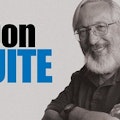According to the APEC 2009 General Chair, Kevin Parmenter, about 1900 attendants registered for the event. “That's just slightly down from last year, up from 2007,” says Parmenter. Considering that Washington D.C. is nowhere near technology oases like Silicon Valley and Austin, and the economy is as bad as it has ever been. I'm not making a big deal of the economy when I talk to people here, though. But still, I'd say the mood is cautiously upbeat.
Vice president of Marketing at Transphorm and co-chair of the Power Supply Manufacturer’s Association (PSMA) Power Technology Roadmap committee, Carl Blake, held a kickoff speech at the plenary session reflecting the cautious atmosphere. Blake was providing an overview of the PSMA’s new five-year roadmap—the essence of which was that it looks like customers are willing to pay for greater efficiency, or more technology, rather than squeezing on price.
I got a slightly different point of view from the crew at the Murata booth on the show floor later in the evening. John Sutherby, a marketing contact at Murata, said he perceived a willingness among customers to open up competition and look at second sources, which he saw as a good thing. I asked Sutherby, “So the buyers are back in the catbird seat?” Not entirely, he said, but they are asking the designers to look more closely at sole-sourced parts.
Going back to the plenary, Blake noted that the PSMA is busier than ever and fielding more presentation than in previous years. More than 50 participants are reviewing input presentations and participating in lengthy conference calls to hammer out what they agree the input means. Blake concluded the talk with a review of two examples from the new roadmap: one for ac-dc supplies, and one for dc-dc supplies.
He talked about how previous roadmaps had guessed low (footprint has shrunk faster than expected and pricing pressures have not been as severe), and where they got it right. He also showed new ways the roadmap committees had sliced the pie to provide finer-grain detail, and showed two spider charts with predictions for the next five years. Check the PSMA Web site to find out when the roadmap report will be available.
As I mentioned in my APEC 2009 introduction article, APEC speaker Andrew Fanara, from EPA, characterized energy efficiency as a “bridge fuel” that would carry us from fossil-fuel dependency to a more balanced, renewable future; and MIT's David Perreault looked at the future of switching supplies with clock rates up to hundreds of MHz. That fit in well with Cian O'Mathuna's update from Ireland on the future of Power-Supply On Chip technology, which needs to be enabled by the same sort of microscale inductors and capacitors.
Attendees in the plenary hall also heard from Freescale's manager of MCU software, John Weil. He sounded another note that I'm hearing alot here in D.C.—which is that we need to take more of a systems approach to power-supply design and make them smarter, and give them the ability to exchange information with the rest of the systems they are a part of.
A123' Jack Wagner also captured the room's attention. He gave a tour of the guts of those lithium batteries that fascinate so many of us, without giving away much of the secret sauce.
As a closing note, if you haven’t seen the video on the annual APEC Mouse Maze, give it a look. Pretty cool stuff. click here for the video.
That’s all for now. But I’ll be back with more updates from the show as APEC rolls on.
About the Author

Don Tuite
Don Tuite (retired) writes about Analog and Power issues for Electronic Design’s magazine and website. He has a BSEE and an M.S in Technical Communication, and has worked for companies in aerospace, broadcasting, test equipment, semiconductors, publishing, and media relations, focusing on developing insights that link technology, business, and communications. Don is also a ham radio operator (NR7X), private pilot, and motorcycle rider, and he’s not half bad on the 5-string banjo.